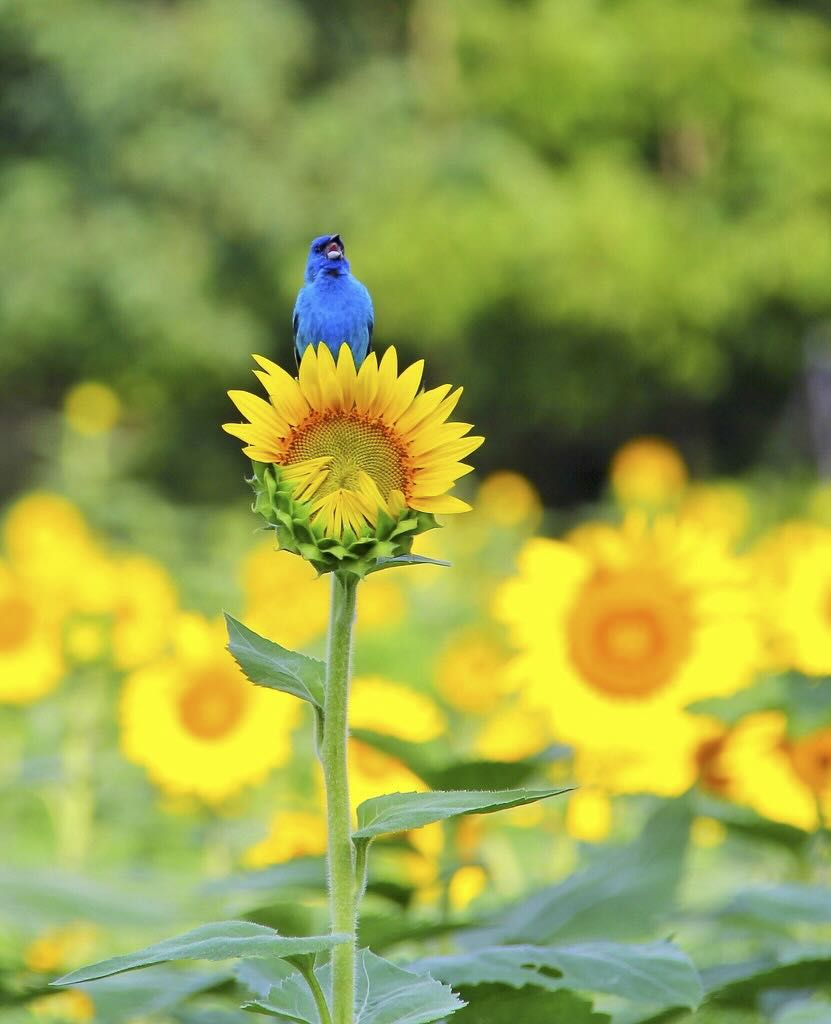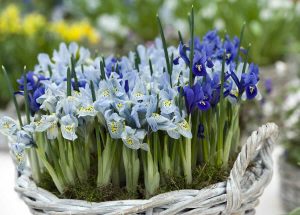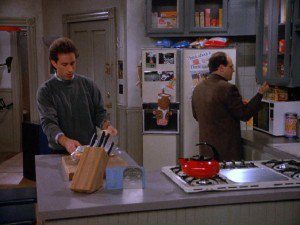
I SUSPECT every gardener has for years now over and again heard the warnings about the most widely used pesticides in the United States, neonicotinoids—or neonics for short. In 2013, the American Bird Conservancy issued a report warning of their impact on terrestrial and aquatic ecosystems, and especially the ripple effect their use was having on birds. The Conservancy has issued an updated report with a telling headline, “Neonicotinoid Insecticides failing to come to grips with a predictable environmental disaster.” So where are we now with limiting the use of these pesticides and what can we as citizens and gardeners do to help in the effort?
Today’s guest is Hardy Kern, the American Bird Conservancy’s Director of Government Relations, Birds and Pesticides Campaign. Hardy, who has a background in zoology, is a longtime advocate in behalf of the environment and especially toxic forces that impact birds. He’s also a passionate home gardener who emphasizes native plants and habitat-style planting, and he shared his top tactics for wildlife-friendly gardening, too. (Photo of indigo bunting on sunflower, above, by Jordan E. Rutter.)
Read along as you listen to the June 10, 2024 edition of my public-radio show and podcast using the player below. You can subscribe to all future editions on Apple Podcasts (iTunes) or Spotify (and browse my archive of podcasts here).
 neonicotinoids and birds, with hardy kern
neonicotinoids and birds, with hardy kern
Margaret Roach: Not that I like birds or anything, and you’ll probably hear a bunch of my loudmouths who are right outside the windows, and even if I close the windows, you hear them. So I-
Hardy: I know, I know. I think somebody told the house wrens and the red-winged blackbirds in my neighborhood I was doing this interview today, because they’ve just come out in full force, so I had to close my office window as well.
Margaret: Yeah, well, they can talk to my house wrens and my phoebes and who knows who else.
Hardy: I think we have the outline of a study there that could be fun. [Laughter.] Can house wrens talk to each other over Zoom on a podcast interview?
Margaret: O.K., good.
Hardy: I love it.
Margaret: I’m up for it. I’m totally up for it. Good, good, good. So just a quick version for people who may not know, what’s American Bird Conservancy? It’s a membership organization, it’s a nonprofit, what is it?
Hardy: It is, it’s a membership organization. We have members in all 50 states across the U.S. We have members in Canada and throughout Latin America as well, and American Bird Conservancy or A.B.C. as our name so wonderfully shortens to, we are dedicated to conserving birds and their habitats across the Americas. And we are primarily comprised of field biologists. We have folks out there that are looking at habitat restoration, doing population monitoring, some really great boots-on-the-ground conservation work. And we also have a really dedicated policy and threats team, which is where I sit, that work on some of the harder to measure in terms of acres, shall we say, impacts on bird conservation. So yeah, all sorts of great things there. So yeah, it’s fantastic.
Margaret: So neonics, they were introduced I think in the 1990s, and just give us the sort of short version of how are they delivered and what are they used for? And obviously these are harmful to birds both directly and indirectly, and maybe you can tell us about some of that as well?
Hardy: Very gladly. Neonics were indeed introduced back in the ’90s. They were first developed for crop use against the pests that might come onto a farm field and concentrate on munching into the stems and some of the early leaves of plants that you are putting out in agricultural areas. And they were developed because there were other chemicals being used at the time, things that are called carbamates or organophosphates, that we were starting to observe some really unfortunate environmental and human-health impacts from.
So neonicotinoids or neonics, like you mentioned, were developed to be this next great wonder chemical because they were seen as highly effective against invertebrate pests, but not having a huge impact on vertebrates. So we weren’t as worried about them with wildlife or with human health.
And the way that they work is they are broken down by water, and then they are absorbed into a plant, or they’re sprayed directly on leaves, and then the next time that a particular insect comes across them or other invertebrate, they are exposed to the chemical or its metabolites, which are its little broken-down parts. They get into that insect’s body and essentially park themselves right in a part of their nervous system called the nicotinic acetylcholine esterase receptor. And don’t worry, there will be no quizzes [laughter], but as I’m sure you can tell, I’ve gotten really good at Scrabble from working on chemical policy.
Margaret: I bet.
Hardy: There’s a lot of big words out there. But essentially what these chemicals do is they block the body’s ability to fire its nerves correctly. You’re not able to contract your muscles the way that you want to. Your organs might stop functioning. So on a small scale with an insect, it works really well. It does a great job of impacting invertebrates. So they are sprayed onto crops, they are coated on the outside of a seed before that seed goes into the ground so that the chemical sloughs off of the seed, and then when the seedlings sprouts, the roots directly absorb it and then the chemical is grown into the plant itself. The entire plant can become pest-resistant, or at least that’s sort of the theory behind it.
Unfortunately, the thing that makes neonics so incredibly effective at killing invertebrates and being really effective in these huge crop systems, is what makes them so dangerous for wildlife. They travel very easily through water, which is how they’re able to be sucked up into the plant. But that also means that when groundwater comes through, when rainwater comes through, or when they get swept downstream, as happens with all water, into local lakes and rivers and eventually the ocean, they continue being effective.
It also means that in a very, very small amount, just enough to sit on the outside of a seed, they are highly toxic. They’re so toxic in fact, that one single kernel of corn with a neonic on the outside of it is toxic enough to kill a songbird or 80,000 bees—8,0,0,0,0 bees—from the active ingredient on just one single kernel of corn. They were designed to be really, really effective in very small amounts, but it’s that highly deadly intensity that makes them such a problem for wildlife.
And in talking about how they affect birds, they’re terrible when they’re directly ingested because the birds can swallow them, which starts to interrupt their nervous system. But as you were talking about earlier, we did this report in 2013 where we talked about what could happen. And then in 2023 we wanted to follow up and say what has happened and what will continue to happen, which is, as these chemicals make their way into the environment, they do their job well, they’re killing invertebrates, and it doesn’t stop at crop pests. It stops at all the beneficial native insects that birds need.
So I like to call it double trouble for birds when it comes to neonics, because you’re not only in danger when you’re directly eating the chemical or if it’s getting on your feathers or on your skin, but when it gets into the environment, it’s really having a negative impact on a lot of insect populations. So then there’s less food for you as a bird to eat. Goodness, I could go on and on [laughter].
Margaret: The numbers in the reports of the decline in populations of insects and then also of what you call “aerial insectivores,” A.K.A. birds, since, in these recent decades is pretty shocking. And then in terms of birds that would be out foraging in an agricultural field where some of those poisoned seeds might be, I imagine grassland species of birds would be especially affected and so forth. So there’s these different avenues for these to contaminate, to poison the food supply of birds, and therefore poison birds. And there’s no washing them off or whatever. These are systemics. These are-
Hardy: Exactly.
Margaret: Right. Right. Like with so many things, the European Union and I think also Canada seemed to have taken more forceful measures to limit their use, or at least their governmental control, monitoring, than the United States has. Although lately you reported that some of the states within the United States are taking some action against these chemicals. Yes?

And what we’re finding with Canada is exactly what we’ve thought about in the U.S. and what we’ve honestly known about here since 2014, which is when a neonic is used as a seed coating, there are very few cases where it’s effective at all, where it’s even impacting the targeted crop pest. And so not only are farmers paying extra for this coating, but they are not seeing any benefit from it. And there’s all this horrible adverse impacts on the environment around them.
And so we’ve actually seen a couple of states take a similar approach. New York State starting in 2029 is going to prohibit the use of neonic seed coatings on corn, soy [above], and wheat. There’s a handful of other states, mostly in the Northeast, that have either moved neonics to what’s called restricted use pesticide status, which means you can’t go buy them at Home Depot, you have to be a licensed pesticide applicator to get them. Or they’ve started saying, we don’t want them used on turf, so you couldn’t apply them in a public park or a golf course. Or they might say, we are going to limit their use to only emergency authorization. So if there’s a new pest that starts to break out in a part of the country or a specific state, we can use a neonic then, but we’re going to phase it out of our everyday use.
And it’s a really exciting time because this past year alone, there were five different states that had neonicotinoid either prohibiting or restricting laws come through their legislatures, and we saw three states actually start to take some of those measures. So we’re hoping for even more next year because that’s where it impacts. And the wheels of the federal government turned very slowly, so yay for states.
Margaret: Yes. So we should say that when awareness of the impact of these chemicals was first raised, again, I mentioned in the introduction like a decade ago, and in the years thereafter, we did see some big box stores and also some mass producers—some popular sort of brands of garden plants that you then see in many nurseries around the country—they did make plans to reduce their usage and some of them put policies in place and so forth similar to the ones you’re talking about with states. But not a 100 percent everybody got rid of it or anything.
And they were never used on every single type of plant in the garden center, for instance. So we’re gardeners listening here on this show. Where are we at with that? How do we find out if the plants for sale at the garden center have been treated? What do you advise us to do as gardeners to protect against this? Because after all, I mean, if everybody’s out shopping for pollinator plants, you don’t want to find out that your pollinator plant that you just bought is lethal [laughter].
Hardy: Right.
Margaret: You know what I mean? That’s a little bit scary and a lot scary. So anyway, yeah. So how do we know, how can we be smarter shoppers and also advocates? What should we be doing? We should be probably asking at every place we shop, just to put pressure on?
Hardy: Definitely. If you’re comfortable asking those questions of store associates or managers or whomever it is, definitely let them know. We’re actually developing some tools that have some very broad boilerplate language that people can use to send a letter to their garden store, asking them to phase out neonicotinoids from their supply chains. There are some larger box stores that have committed to it or talked about committed to it. Unfortunately, we’ve not seen great follow-through from those, or even if they put a policy in place, neonicotinoids have become so ingrained in so much of our large-scale plant production, it’s really hard to know for sure.
So the first thing is exactly what you said. Ask the question, see if they know. I would also like to give everybody a little bit of a peace of mind if you are buying seeds and starting plants from seeds, or if you are buying bird seed, I’ve talked a lot about neonics as a seed coating. You cannot sell seeds anywhere in the United States directly to a person or as animal feed that have been coated with a pesticide. So if you’re buying a seed packet, if you’re picking up sunflower seeds to put in your bird feeder, those do not have neonic coatings on them. You’re good to go. So that’s, very time intensive and difficult, but that’s the best way to know that your seeds are not going to have contamination from neonics as much as you can help it.
The next thing I would recommend is going to a local native plant nursery or a smaller store that maybe has a better understanding of its supply chain, and can better ask those questions of the greenhouses or nurseries from where they are sourcing their plants. Whenever somebody is in agricultural production of any scale, they have to keep very detailed records of what chemicals that they’re using to treat for different things. So sometimes it’s as easy as just checking back in your records or calling up your supplier to figure it out.
But the other thing you can do if you’re not comfortable doing those, or if you’re in an urban area, and really the only place you can go is one of the big box stores, is if you take the plants and before you put them into your soil, wash all of the soil off that is in that container with them so that you just have the roots.
While neonics are very pervasive in the environment, once they are absorbed into a plant, they only stay active or at highly toxic levels for about two to three weeks after application. So if you are able to get a lot of that soil out and get that water out where they might be hanging out for a little bit longer, there’s a good chance that you are able to limit how much would accidentally be finding its way into your garden. [Below, bees on sunflower; photo by Jordan E. Rutter.]

For instance, I’d vote for, I think one of the best things I ever did, and I didn’t do it for animals, I did it because I wanted to hear the sound of water 30-something years ago, I put in water gardens, and that’s turned out to be the most wildlife-supporting thing that I could have done. So I would say have a water source 12 months, a year. That would be one of my things. But what kinds of things do you, Hardy, believe are positive? So not just the defensive against the neonicotinoid thing [laughter], but yeah, something positive, please.
Hardy: Something positive. We got tons of positive stuff. One, just being interested in this and asking these questions and being conscious is such a monumental step forward in our societal approach to gardening and wildlife. So even asking these questions is helpful and having these conversations. So what I recommend, as much as you’re able to, water sources are fantastic. That’s a great way to do it. I do, of course, I grow some vegetables and we do definitely have some pests that come in. I use the more biosafe insecticidal soaps because they dissipate very quickly. They are no longer toxic after initial contact or once they dry, and they don’t live in soil. So that’s a great way to still take care of your pest problems, but not worry about introducing too many things.
Concentrate on planting native plants as much as you can, not just because it might be something that produces berries, so you can see a bird come in, but also the native insects, the moths and butterflies and the praying mantises and crickets and things that have evolved in your part of the country are going to be looking for these plants as their host plants. That’s where they lay their eggs, that’s what they like to eat. That’s what they like to hang out on. And so that’s where birds are already looking for really great sources of food.
And one of the other things that it might not make you the most popular with your neighbors until you explain to them what’s happening, but a great thing that you can do is letting your flowers go to seed in the fall. A lot of us, as soon as the petals fall off and they start to look a little more scrubby and grubby, we might want to trim things down or pull them out of the ground. But if you’re growing coneflowers or native sunflowers or something and it produces seeds, let those seedheads stick around because when the birds start migrating back in the fall or when food gets a little more scarce, they are looking to these plants as a food source. And the best part of that is you’re also then becoming a gardener all around your area because those birds are going to eat those seeds. What goes in must come out. And when it gets deposited on the ground out of the bird’s backside, it’s got some nice little nitrogenous fertilizers surrounding it. So it’s a great way to spread native seeds as well.
And one other thing I did for the first time this past year was on all of my native plant beds and in my garden, I raked up leaves out of my yard and kind of left them in a protective layer. And what was so cool to me was in the spring we had robins and some of the early migratory birds coming from our neighbor’s yards into ours and turning the leaves over, which is not only helping turn up the soil and get some of those really nice composting materials down in there, but they were looking for bugs. They were looking for the millipedes and worms that were hiding in that leaf litter. So really great things to do, and it’s more time for yourself. Do that crossword puzzle. Have another cup of coffee [laughter]. Don’t worry so much about raking every leaf. You’re doing well.
Margaret: I also think that another action, and for me, it’s been a more recent understanding of this, I had read, I don’t know how many years ago, about, I think the acronym that’s used toward is ALAN, Artificial Light At Night. And the danger of that and how it confuses so many insects and can therefore kill them because they’re off course, so to speak, their behavior is interrupted and whatever. So what about that? I’ve changed out bulbs. I have things only on, what do you call it, where it comes on only when someone passes by it, like if I enter the driveway.
Hardy: A motion sensor. That’s great.
Margaret: Right? A motion sensor. And I’ve changed out the bulbs to CFL yellowish, yellow-colored CFLs that are not as attractive to insects, to sort of minimize the damage, so to speak, to let the night sky be dark. And I know that’s harder in a more densely populated area, but I think that’s also something that we can talk to our neighbors about and explain why we’re doing it.
Hardy: For sure.
Margaret: Because maybe they want to get on board too, and that can make a big difference in the insect population, I think.
Hardy: That can make a huge difference in the insect population. Yeah, turn those lights off at night or switch them to the more insect-friendly varieties of bulbs that you might have. Another thing that a lot of folks, if you’re somewhere that has a lamp post in your front yard or if you can talk to your city about it, sometimes just taking lights and changing the lampshades essentially, that’s not exactly what they’re called, on those outdoor lights so that the light is directed down and not up into the sky, so it’s a more concentrated beam. That can be a great way to limit that light pollution and cut down on some of those artificial light sources as well.
Another thing you can do specifically to help birds is monitor any windows you have. And if you notice that now and again, you might get a bird bonking into your glass windows. There are decals you can put up. Sometimes it’s even as simple as just closing the curtains at very bright times of the day so that you cut down on the reflection. Birds aren’t so great at knowing what’s glass and what’s just thin air out in the world. And so helping them out that way is fantastic.
And then also, if you have a pet cat, a great thing to do is build a catio, still let them go outside on a leash or supervised with you, but mostly keeping them inside or outside supervised as much as you can, just to cut down on the accidental happenings that will certainly arise when a cat meets a bird out in the world.

Hardy: Oh, my gosh.
Margaret: Are there particular birds that you’re seeing engaging with particular plants there? Anything that you’re feeling optimistic about that even in your suburban environment it’s made a big difference?
Hardy: Definitely. We have, like I said, the American robins love to come down and forage for mealworms, but we do have a really, really mouthy Carolina wren that loves to hang out in the woodpile that we have next to our raised bed where I’m growing a lot of vegetables. And he will not only get in there to eat some of the insects that are in the woodpile that come up in the soil, but we’ve also noticed that he will come and eat some of the tomato hornworms. That started last year, which was really, really beneficial. We have a big sweet gum tree in the front yard and all spring, I love watching the goldfinches come in and eat all of the seeds out of those seedpods. And we also have planted in the back some boneset and some milkweed, and those attract a lot of native insects.
And we have a bluebird box in the back, and I have sat there on our little deck and watched the bluebirds up in the tree above the bluebird house, swoop down over top of our boneset and grab all the flies and bugs that are attracted to the boneset flowers. And so it’s great because the bugs are coming in doing their thing. It’s built-in protection against some of those insects that might munch a little too many leaves so that it doesn’t look quite as visually appealing and the birds are getting the meal that they’re supposed to have. It’s just the best.
And I have to say, it’s the interactions you don’t even think about. It’s the benefits you don’t even realizing you might be having that are always the ones that stick out to me the most. Like I said, letting your flowers go to seed. We had these beautiful daisies that were already planted at the house, and I let them go all the way to seed last year. And every single day I’d look outside and see field sparrows and grasshopper sparrows one time, which was super-exciting, and even a grosbeak coming down and feeding off of these daisies, which is not something I’m going to put in a vase and put on my dining room table at that point. But so great for the birds, and it just really transformed how I saw our yard. It was fantastic.
Margaret: Yeah. Well, you’re just making me think of so many different things, but I just wondered with, on the American Bird Conservancy website, there’s more details about so many of these things. And so with the transcript of the show, I want to definitely link to more details. Like you have a great page that tells about how to prevent window strikes, things you think you were talking about before. But is there one more little detail that you want to make sure that we know about real quickly or all good?
Hardy: The biggest thing I would say is we are celebrating this year, 30 years of bird conservation. It’s our 30th anniversary, which is super-exciting. So we have three decades of results and we’ll be publishing some of the results of our three years of advocacy in bird conservation later this year. And I’ll also say that while we do have that hugely long, wonderful report on neonics.
Margaret: Oh, good. So thank you so much, Hardy Kern of the American Bird Conservancy. I’m glad to talk to you and kind of get the update on this challenging topic. And I’ll be sure to also give the links to your advocacy on how we, as consumers, can help who we should be writing to and complaining to and make our voices heard and so forth. So we’ll do that as well. So thank you so much. I hope I’ll talk to you again soon.
Hardy: Thank you, Margaret. Thank you so much for the opportunity.
prefer the podcast version of the show?
MY WEEKLY public-radio show, rated a “top-5 garden podcast” by “The Guardian” newspaper in the UK, began its 15th year in March 2024. It’s produced at Robin Hood Radio, the smallest NPR station in the nation. Listen locally in the Hudson Valley (NY)-Berkshires (MA)-Litchfield Hills (CT) Mondays at 8:30 AM Eastern, rerun at 8:30 Saturdays. Or play the June 10, 2024 show using the player near the top of this transcript. You can subscribe to all future editions on iTunes/Apple Podcasts or Spotify (and browse my archive of podcasts here).
 neonicotinoids and birds, with hardy kern
neonicotinoids and birds, with hardy kern






